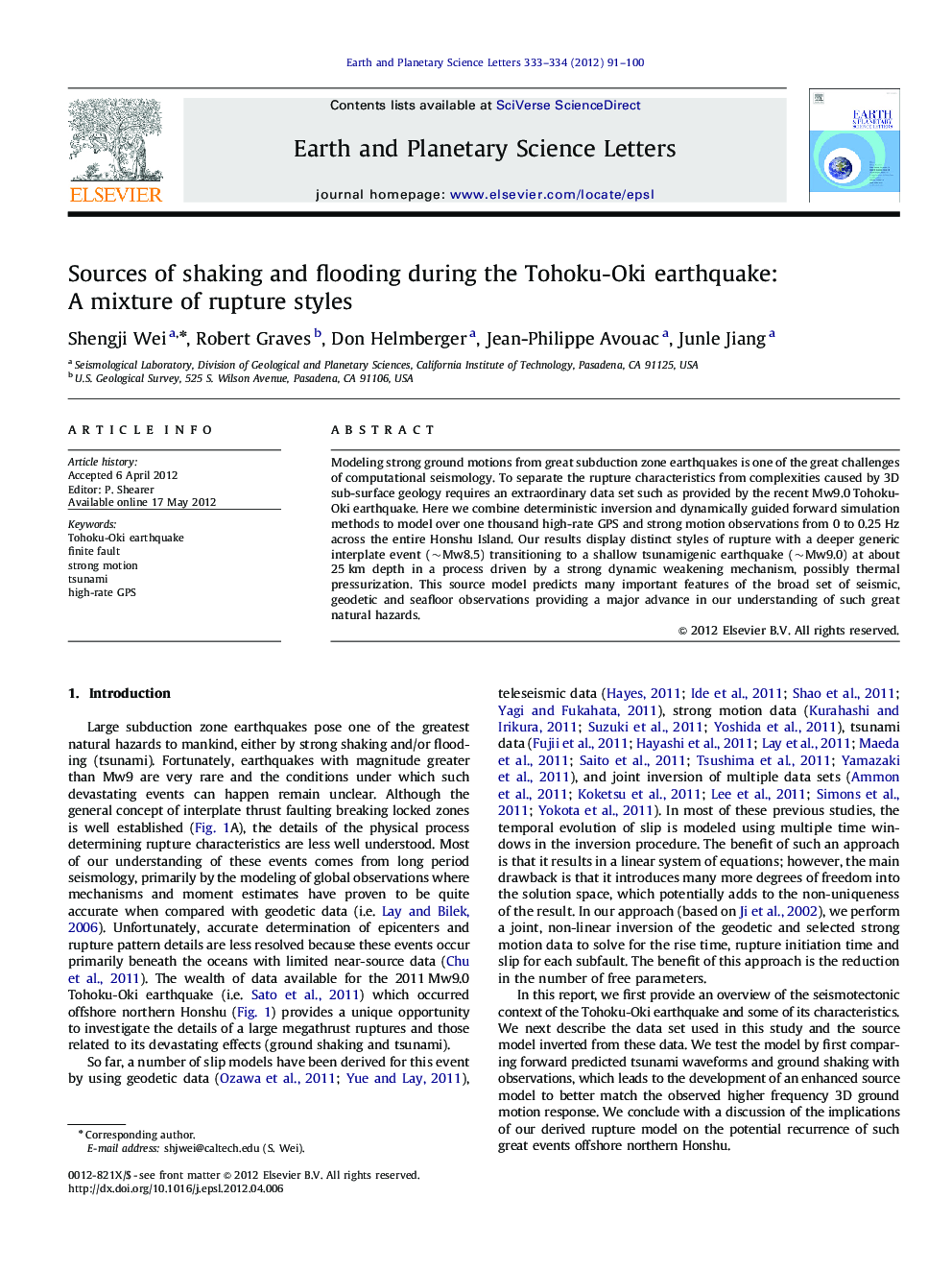| Article ID | Journal | Published Year | Pages | File Type |
|---|---|---|---|---|
| 6430616 | Earth and Planetary Science Letters | 2012 | 10 Pages |
Modeling strong ground motions from great subduction zone earthquakes is one of the great challenges of computational seismology. To separate the rupture characteristics from complexities caused by 3D sub-surface geology requires an extraordinary data set such as provided by the recent Mw9.0 Tohoku-Oki earthquake. Here we combine deterministic inversion and dynamically guided forward simulation methods to model over one thousand high-rate GPS and strong motion observations from 0 to 0.25Â Hz across the entire Honshu Island. Our results display distinct styles of rupture with a deeper generic interplate event (â¼Mw8.5) transitioning to a shallow tsunamigenic earthquake (â¼Mw9.0) at about 25Â km depth in a process driven by a strong dynamic weakening mechanism, possibly thermal pressurization. This source model predicts many important features of the broad set of seismic, geodetic and seafloor observations providing a major advance in our understanding of such great natural hazards.
⺠The slip model explains wide range of the data including ground motion from 10 s period to static. ⺠Shaking came from the deeper rupture and the tsunami originated from very large slip at shallow depth. ⺠Using refined source model with 3D crustal model provides improved fit to observed motions.
